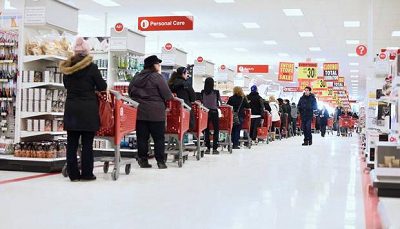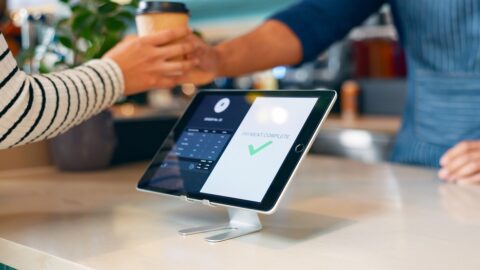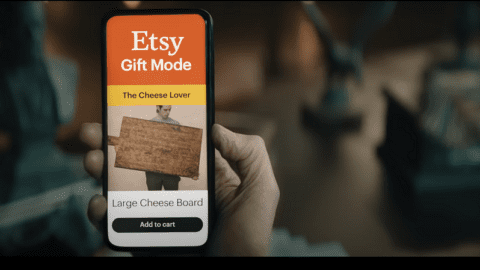The news that technology powerhouse Microsoft is working on cashier-less technology that could help retailers compete with Amazon Go signals a major advance in this area. Still, questions remain about exactly what kind of solution will best solve shoppers’ checkout pain points. While some consumers may welcome a cashier-free environment, others might want more cashiers on duty to provide assistance if needed.
Tech-savvy retailers are still trying to figure out the optimal way forward. Kroger has made major investments in its Scan, Bag, Go technology, which allows shoppers to scan products either with a device provided by the store or with their smartphones. The retailer is in the process of expanding the program to 400 stores, and Kroger CIO Chris Hjelm identified the technology as one of his proudest achievements of the past few years.
In contrast, Walmart abandoned its Scan & Go solution in May 2018, citing a lack of customer usage. Just a few months earlier, the retailer had said it would expand the program to 100 stores. Walmart is reportedly in discussions with Microsoft about a collaboration using its new solution.
Advertisement
Will Checkout Lanes Become The Road Less Traveled?
Retail industry experts are likewise divided about whether Microsoft’s involvement will accelerate the move to a cashier-free future. “Microsoft taking on Amazon with cashier-less checkout demonstrates how close we are to a breakout of alternative ‘checkout and scanning’ processes and applications,” said Michael Jaszczyk, CEO, GK Software USA in comments provided to Retail TouchPoints. “We’re beginning to see more and more companies like Microsoft react to Amazon’s lead, all working to implement this type of technology. As more vendors offer these types of self-scanning solutions and retailers pilot them in their stores, consumer demand will follow as well as increased store revenue. I believe that in three to five years, traditional checkout lanes will become somewhat of a relic and we will have a hard time remembering what it was even like to stand in line at the POS.”
Others doubt that consumers are all that eager to shop in checkout-free stores: “No one should jump to the conclusion that cashier-less checkout is expected by consumers,” said Nikki Baird, VP of Retail Innovation at Aptos. “Retailers, no matter the goods they sell, need to pay attention to pain points in their customers’ journeys, and turn those pain points into opportunities for delight. That might mean cashier-less, or it might even mean more cashiers. Every retailer’s customer expectations will be different — and that’s where the real opportunities lie, in in taking advantage of those differences.”
For Retailers, Data Benefits Could Outweigh Head Count Savings
Retailers may be less interested in using the technology to reduce head counts in stores, and more about the data-gathering capabilities. For example, camera-based systems can reveal details about shopper behavior: “Customers might look at a Coca-Cola bottle before they pick up a Pepsi, or pick up a bottle of Sprite, but 20% of the time put it down and buy Mountain Dew,” said Michael Suswal, Co-Founder and COO of Standard Cognition, which is developing its own version of cashier-less technology. “Operational benefits such as inventory audits and other shelf compliance tasks, and data such as how people’s behavior changes when they are shopping alone versus shopping with friends or family, are valuable learnings for retailers,” said Suswal in an interview with Retail TouchPoints.
Many industry experts believe cashier-less technology actually can enhance the shopper experience. Suswal noted that Uber and Lyft have made rides more pleasant by removing the payment transaction from the experience. In a retail store, “the space can be more friendly because the payment piece has been removed,” he said. “We try to rehumanize retail by removing the machine from between customers and associates, and allowing people to interact as equal humans.”
Even with Microsoft’s involvement and other tech advancements, it seems clear that the industry is a long way from scaling up cashier-less technology. Amazon is adding Go stores, but at a snail’s pace, and the company says it has no plans to bring the technology to Whole Foods. It’s likely that retailers will need to maintain traditional checkout options along with new solutions, at least for the foreseeable future.
In a blog post for Mobile Payments Today, Tom Chittenden, VP and General Manager, Retail Solutions, NCR Corp, wrote “What’s the best approach to frictionless checkout? Quality service is in the eye of each consumer, so retailers shouldn’t take a single-vision approach toward adopting new technology inside the store, or they might alienate parts of their consumer base. Grab-and-go shopping, most recently represented by the Amazon Go store, is one of the more attention-grabbing paths for achieving frictionless checkout, but it’s only one of the many paths that retailers could consider.”









